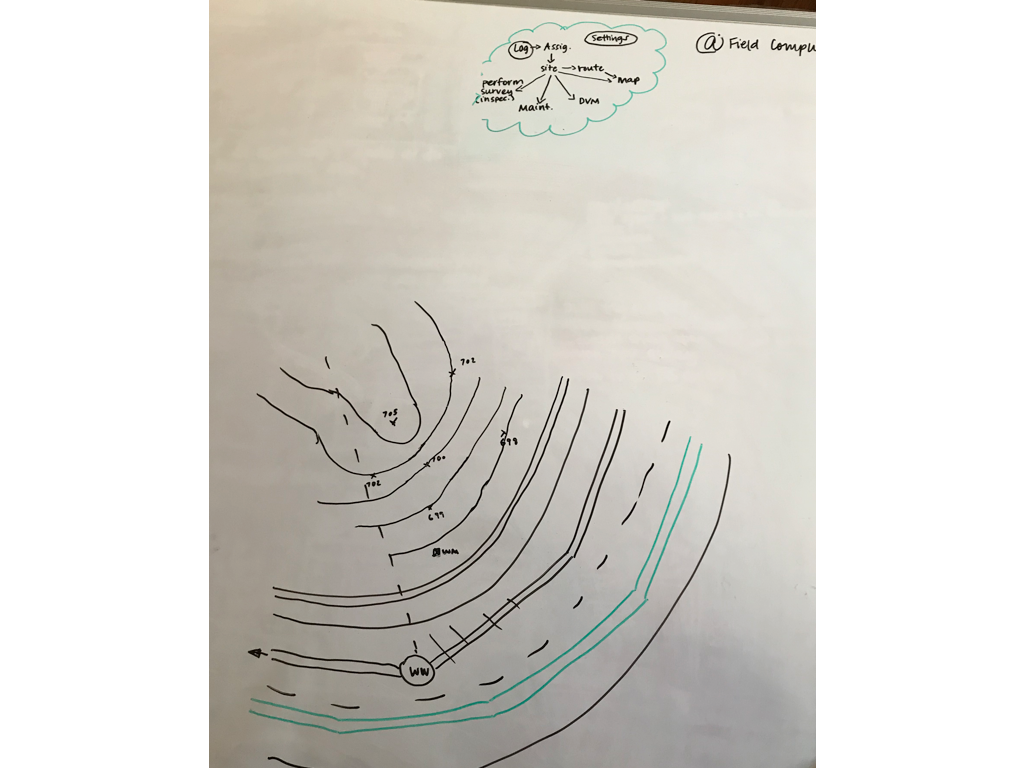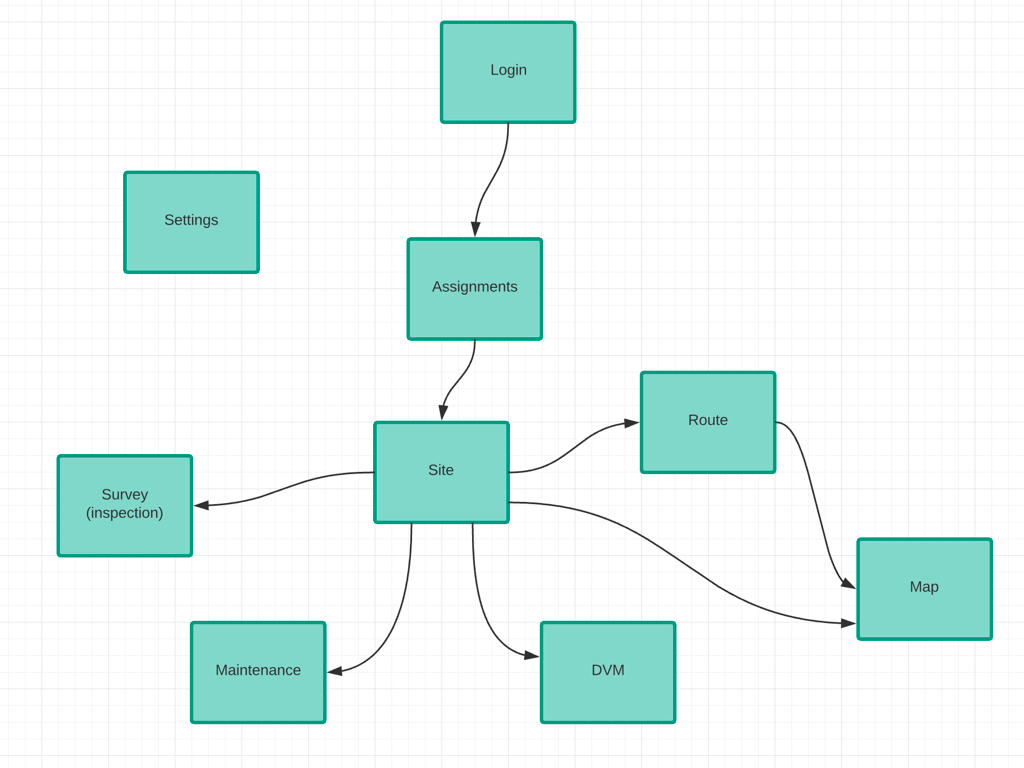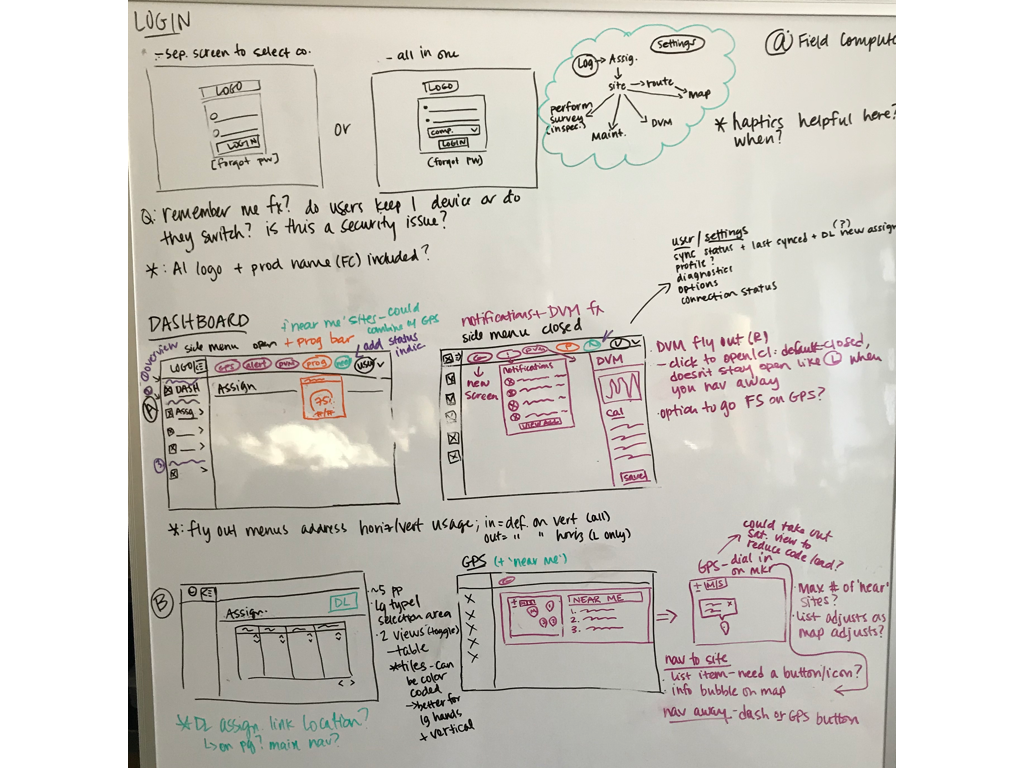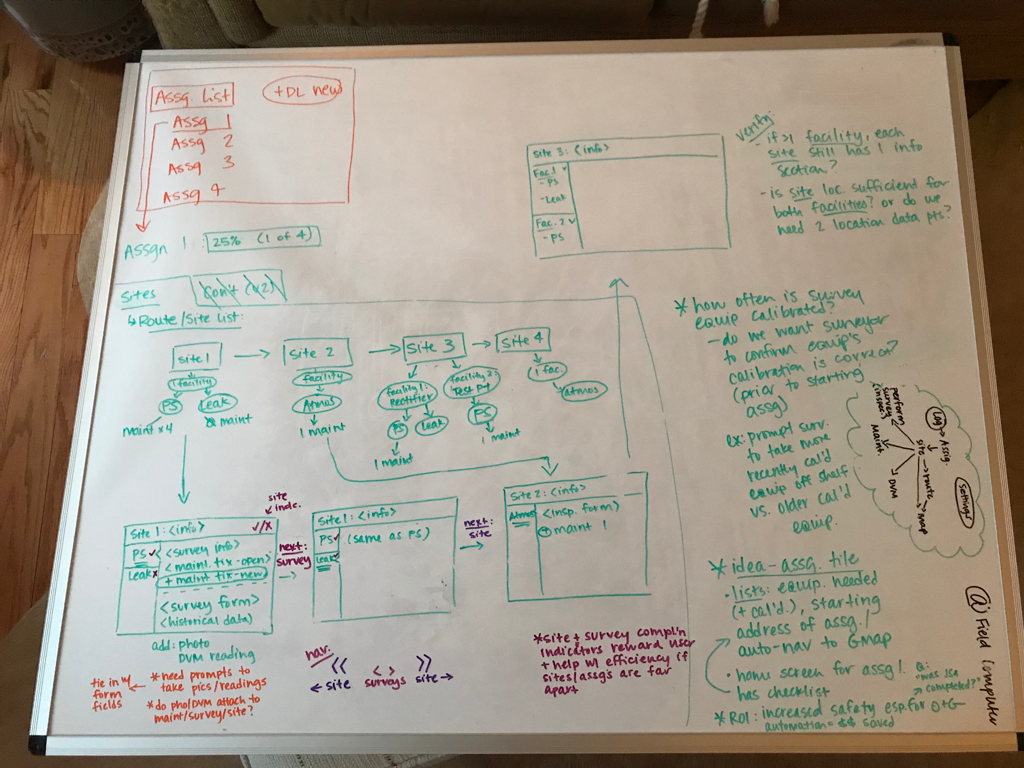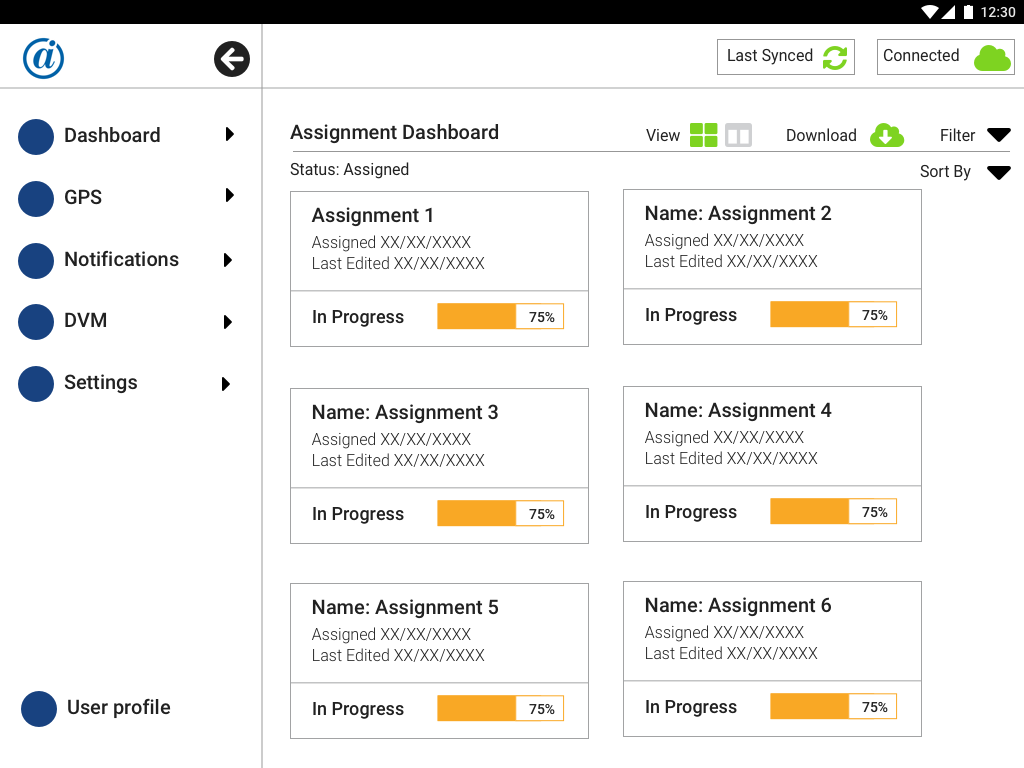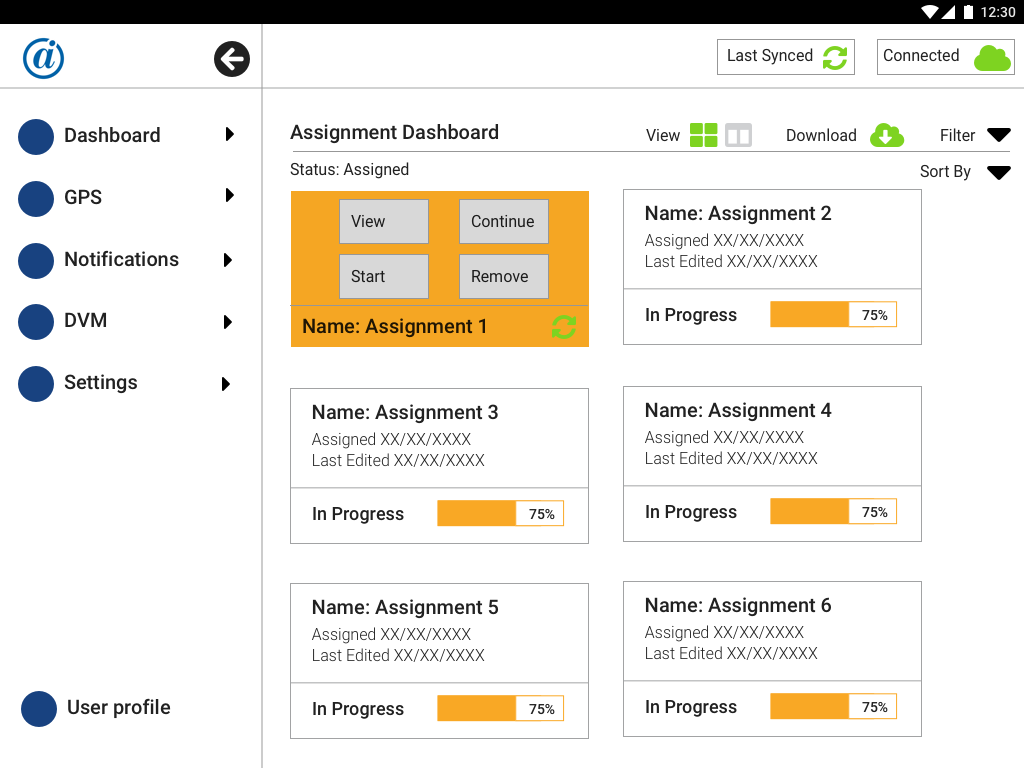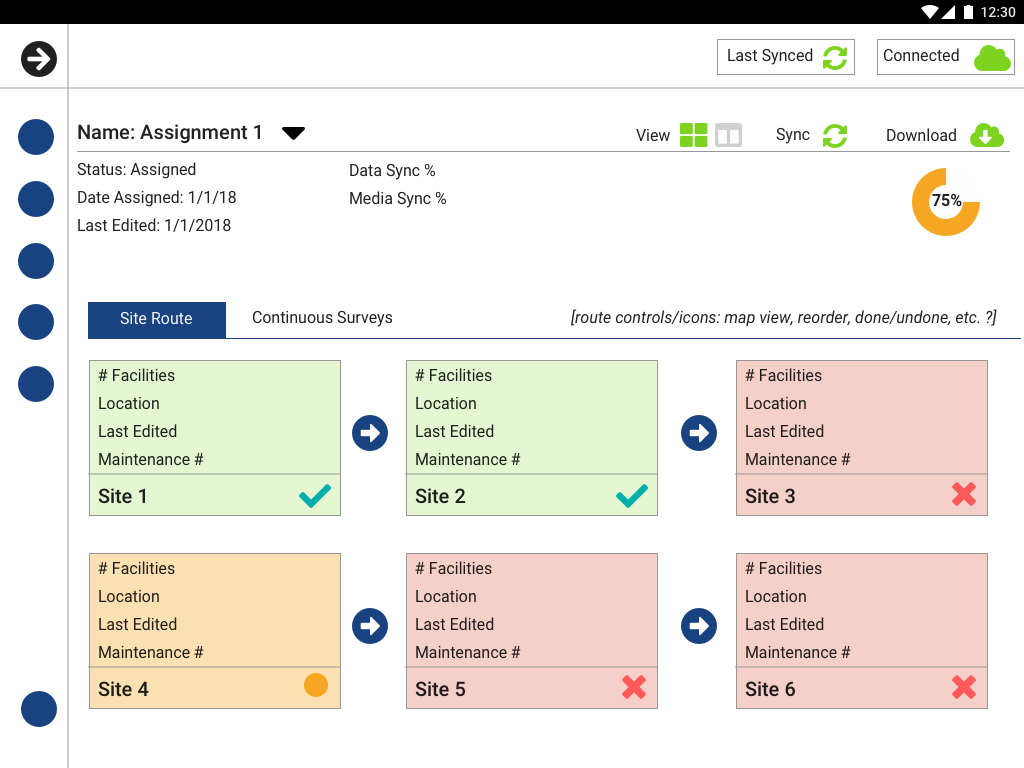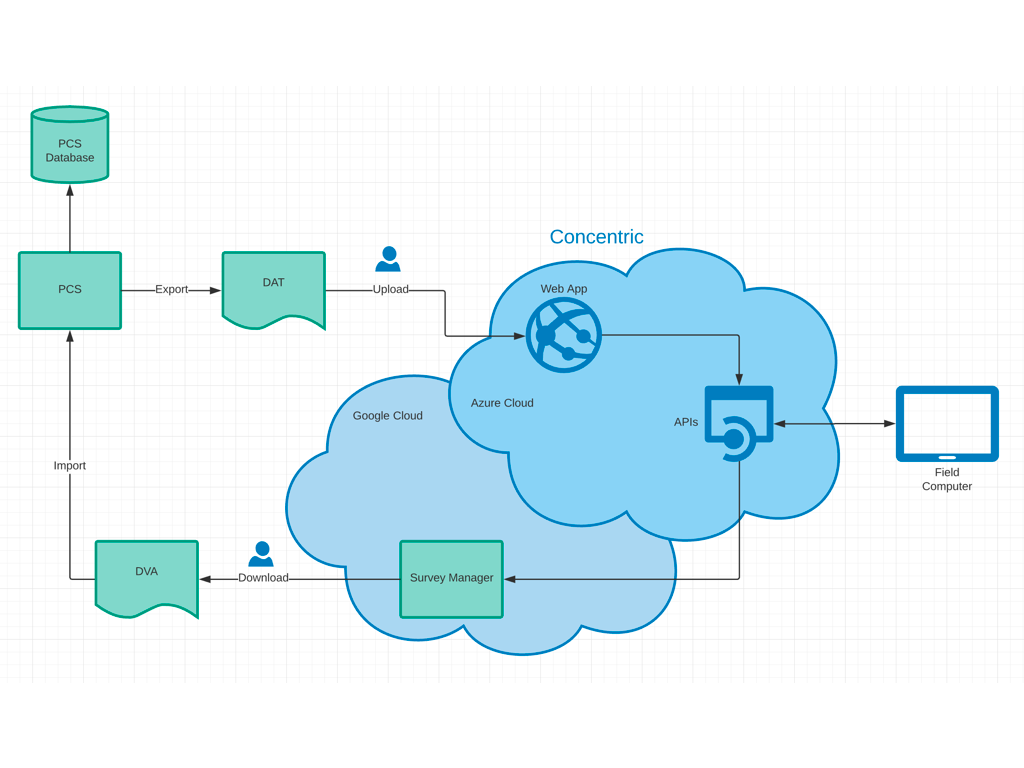American Innovations Field Computer
THE CLIENT
AI is the industry leader in providing customized hardware and enterprise-level software to oil and gas companies for surveying and maintaining pipelines. Their goal was to move away from handheld devices with locally stored data to a cloud-based solution used in conjunction with Android tablets and mobile devices.
THE WORK
I worked with a development team to create an initial tablet prototype, seen below. Primary considerations were to follow ADA best practices for design, and to design information in a way that allowed users to operate in a variety of outdoor work and weather conditions. A mobile app and web app will follow. Key points of my process are outlined below.
SELECTED PROCESS NOTES
Phase I: Discovery + Ideation
Gather design + dev requirements
Devices are overwhelmingly used in bright, remote, outdoor environments, so Android tablets have been targeted for their relative ruggedness and cost-effectiveness. However, responsive design is a primary consideration so that users can also access the application on Android and iOS mobile devices.
ADA best practices for design need to be closely followed, specifically as they relate to color and usability. This translates to paying close attention to contrast and readability, using larger font sizes and touch targets, and employing multiple techniques to indicate functionality (for example, using a combination of icons, helper text, and color indicators, rather than a single technique).
As it relates to an enterprise level product, the cloud app allows the users and stakeholders to dictate what appears in the app, streamlining the app by eliminating the need to build editing functions into it.
Development considerations include using Xamarin forms.
Heuristic evaluation of current UI + hardware
The current proprietary hardware and UI pre-date smartphones and tablets (so much so that it mentions its color screen, camera, and full QWERTY keyboard as its top selling points).
It comes with limited battery life and does not have internet connectivity, meaning that all data has to be manually transferred (via a hard connection) between the hardware and a centrally located computer (aka, far from the site where all of the work takes place).
Furthermore, the user has to upload several programs from the computer to the hardware to ensure that users have all of the needed information before disconnecting and heading out to their job sites--a huge problem if the user forgets to load a needed program.
User considerations + research
I conducted one-on-one interviews with engineers and surveyors to understand how various types of pipelines are designed and installed, as well as how surveying tasks are approached and completed.
Users and stakeholders overwhelmingly voiced a need for assignment updates to be automatically synced between the device and the cloud whenever a wireless connection is available. This is a major pain point, as the assignment sites are often remote and hard to access (think: coordinating a surveyor's access to a privately owned property...in a pasture...40 miles from the surveyor's office).
Phase II: Interaction Design
Create workflows + sketch wireframes
Build lo-fi wireframes
Build hi-fi wireframes for clickable prototype
